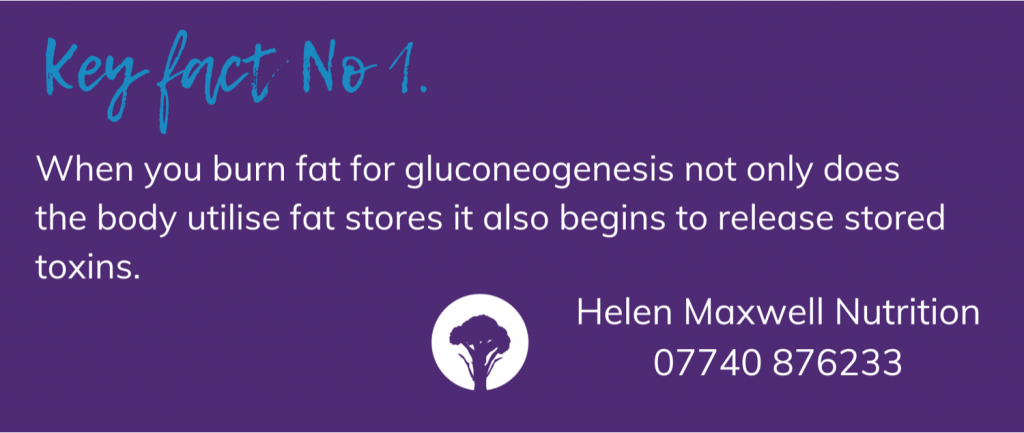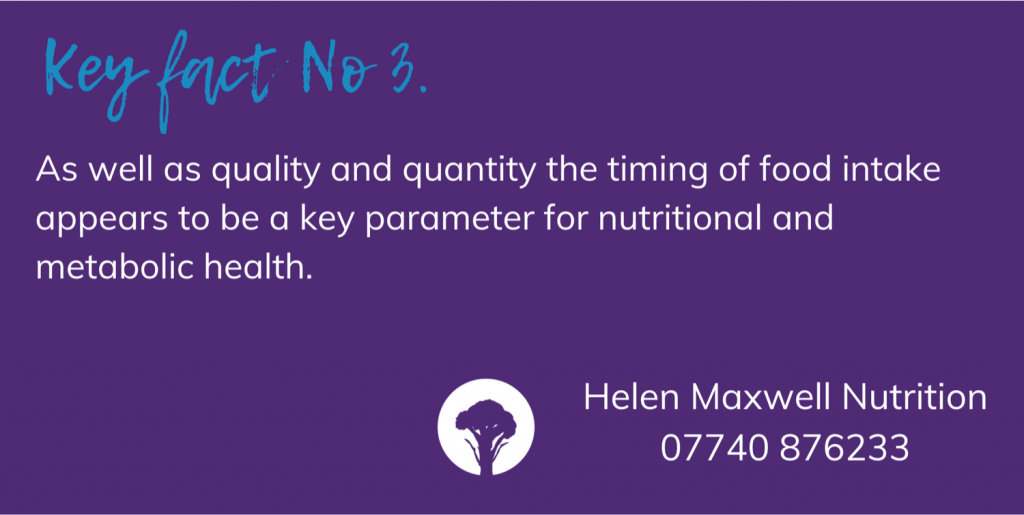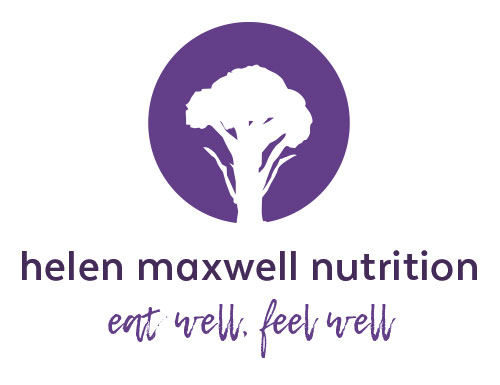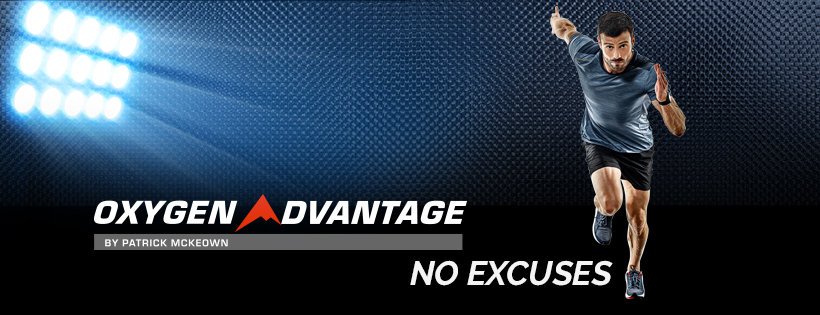Intermittent fasting and fasting for health

Intermittent fasting is in the limelight at the moment but many traditions have been incorporating fasting for millennia. Humans have historically fasted overnight, for religious reasons or during periods of food scarcity. Some monks have a precept called ‘no meals after noon’ and religions such as Taoism, Sikhism, Hinduism, Christianity, and Buddhism all fast.
Fasting principles
What we eat at mealtimes is our primary fuel source for 3-4 hours. After 4-12 hours we utilise sugar (glycogen) stored in the liver, muscle and brain. Somewhere between 10 or 12 hours we will start to burn fat out of the liver to produce glucose for energy (gluconeogenesis). It takes 2-3 days for fat to become the predominant fuel source.
The body will often store toxins in fat cells waiting for an opportune moment to detoxify. It’s a bit like us putting things in cupboards, pending a rainy weekend for a clear out. When we are constantly digesting this moment doesn’t materialise. The body never gets chance to undertake any longer term regeneration or deep cleaning projects and our cells and guts can become overwhelmed.
"fasting is the body's equivalent of spring cleaning your house or servicing your car"

The digestive system
The inside of our gastro intestinal (GI) tract is still considered external to the human body. The cells lining the GI tract act as the gatekeeper to our body’s internal environment. The lining is delicate about half the width of a human hair. Nevertheless it underpins all of our health by protecting our immune system and blood stream from toxins and pathogens. The lining is covered in a mucus layer which contains our gut flora (microbiome) and this forms a selective barrier between us and the outside world.
Host microbiome axis: Interaction between the GI tract, the mucus layer and our immune system

Source: Esser, D. et al. (2019) Functions of the microbiota for the physiology of animal metaorganisms; Journal of Innate Immunity; 11(5), pp. 393-404
The immune system
Just behind our gut lining sits our gut associated lymphoid tissue (GALT) which is host to the majority of our immune system. Most people eat at least 3 meals a day plus snacks. This means our immune system is on duty 14 hours a day assessing anything that filters through the gut lining for potential toxins and pathogenic material.
With constant stimulation and no rest, our immune system can’t build up reserves of antioxidants or take care of any long-term building projects. It then risks developing faults or errors of judgment which scientists believe can make us susceptible to:
- Gut inflammation
- Food sensitivity
- Asthma/eczema
- Allergy
- Autoimmune issues
- Diabetes
- Cancer

Types of fasting
There are a number of different types of fasting (see below)*. There are also hybrid diets such as the fasting mimicking diet (FMD). This is low in calories and protein but high in fat and maintains micronutrient content. Time restricted feeding (TRF) when food is kept to an eating window of 12 hours (7am to 7pm) or 8 hours (8am to 6pm) will provide an overnight fast of 12 and 14 hours respectively. These variations may be more suitable for some people depending on their state of health and unique physiology.

Longer fasts of up to 5 days can promote autophagy which is a process of programmed cell dissolution. This takes place once all of our glycogen stores have been utilised c. 24-72 hours around the 4th or 5th day. With this process the body breaks down any damaged cells such as mis-folded proteins, ameloid plaques, damaged DNA etc. It’s a process of self-eating where the body recycles damaged materials for alternative use. Shorter fasts such as Intermittent fasting help the body to train into longer fasting periods. Fasting shouldn’t be undertaken without due consideration of your current health status and reference to your health practitioner or GP.

“You get rid of the junk during starvation — and once you have food, you can rebuild… The damaged cells are replaced with new cells, working cells — and now the system starts working properly.”
Dr Valter Longo
What fasting does
Your autonomic nervous system (ANS) carries out all the functions which basically run your body on a day to day basis. Fasting seems to press the reset button on your physiology and all the functions of your ANS including:
Gut / immune system reset - fasting appears to reset our metabolism and rejuvenate the immune system as it gets chance to rest and recover and restore our antioxidant reservoirs.
Gut hormone/stress reset – fasting resets our hormonal systems and avoids the constant adrenaline state to which so many of us have become accustomed.
Gut / brain reset – fasting can help to change our emotional relationship with food as we challenge the body to adapt to different levels of food supply.
Liver reset – fasting facilitates detoxification as we burn fat and sugar out of our liver compartments.
How fasting improves health
Studies in humans and mice of different types of fasting demonstrate improvement in multiple health indicators such as:
- Weight loss
- Reduced insulin resistance
- Lower insulin levels
- Decreased oxidative stress
- Lower cardiovascular risk factors
- Lowers blood pressure
- Resets our microbiome
- Decreases inflammation
- Protective for cognitive function
- Anti-ageing
My approach and cautions
I don’t introduce fasting until I believe the client is sufficiently healthy to follow the protocols safely. My approach is personal to each client. Before starting to restrict food intake we work to ensure that they are well nourished from a micronutrient perspective, have a well functioning liver and detoxification pathways and are hormonally stable. In addition they will preferably be trained in the breath-work I teach. This helps clients to work with their autonomic nervous system to manage their stress levels and emotional state in general, but also around food.
We typically start with 2-3 days of intermittent fasting. Usually it’s from the last evening meal at around 7 pm until about 1 pm or lunchtime the next day. This provides an 18 hour break for both the digestive and the immune systems.
Hydration is also important. I have a specific hydration protocol for clients to follow when they are preparing for or undertaking a fast or intermittent fast. There are some contraindications to fasting so I always recommend working with a health practitioner.
What the research shows
Most of the research is currently in mice but it seems to demonstrate:
- There are metabolic benefits from fasting including time restricted feeding even if no weight loss is recorded.
- As well as quality and quantity the timing of food intake appears to be a key parameter for nutritional and metabolic health. Circadian rhythm and metabolic processes are linked and their disruption can lead to weight gain. Gut bacteria appear to have their own circadian rhythm and fasting benefits this.

Get in touch on 07740 876233 for more information or if you would like or to discuss your health concerns and how I might be able to support you.
Please note: This article is intended for information purposes so readers can gain an understanding of the benefits of fasting for health. I highly recommend working with a health practitioner if you plan to try this as there are many aspects to take into consideration.
References
Chaix, A. (2022) Time-restricted feeding and caloric restriction: two feeding regimens at the crossroad of metabolic and circadian regulation; Methods Molecular Biology; 2482 pp 329-340 DOI: 10.1007/978-1-0716-2249-0_22
Cheng, C-W. et. Al. (2014) Prolonged Fasting Reduces IGF-1/PKA topromote hematopoietic-stem-cell-based regeneration and reverse immunosuppression, Cell Stem Cell; 14(6) pp.810-823 http://www.cell.com/cell-stem-cell/fulltext/S1934-5909(14)00151-9
Longo, V.D. and Panda, S. (2016) Fasting, circadian rhythms, and time restricted feeding in healthy lifespan; Cell Metabolism;14; 23(6); 1048-1059.
Mattson, M. P., Longo, V.D. and Harvie, M. (2018). Impact of intermittent fasting on health and disease processes. Ageing Research Reviews: 29 pp. 46-58.
Rangan, P. et. al. (2019) Fasting-mimicking diet modulates microbiota and promotes intestinal regeneration to reduce inflammatory bowel disease pathology; Cell Reports; 5;26 (10); pp. 2704-2710.e6. doi:10.10.16/j.celrep.2019.02.019
Sutton, E.F. (2018) Early time-restricted feeding improves insulin sensitivity, blood pressure and oxidative stress even without weight loss in men with pre diabetes; Cell Metabolism; 5; 27(6); 1212-1221,e3.
Wei, M. et al. (2017) Fasting-mimicking diet and markers/risk factors for aging, diabetes, cancer, and cardiovascular disease; Science Translational Medicine; 15;9(377)
Vaughn, K.L and Mattison, J.A. (2018) Watch the clock not the scale; Cell Metabolism, 27 pp.1159-1160.
Training
Zach Bush Biology Basecamp (2020)
Pending:- Intermittent fasting: personalization for better outcomes by Amanda Swaine, DipION, BANT, CNHC
* Fasting types:- intermittent fasting (60% energy restriction on two days or more), fasting mimicking diet, time restricted feeding (8 hour food window) and periodic fasting (5 day diet providing 750-1100 kcal).





